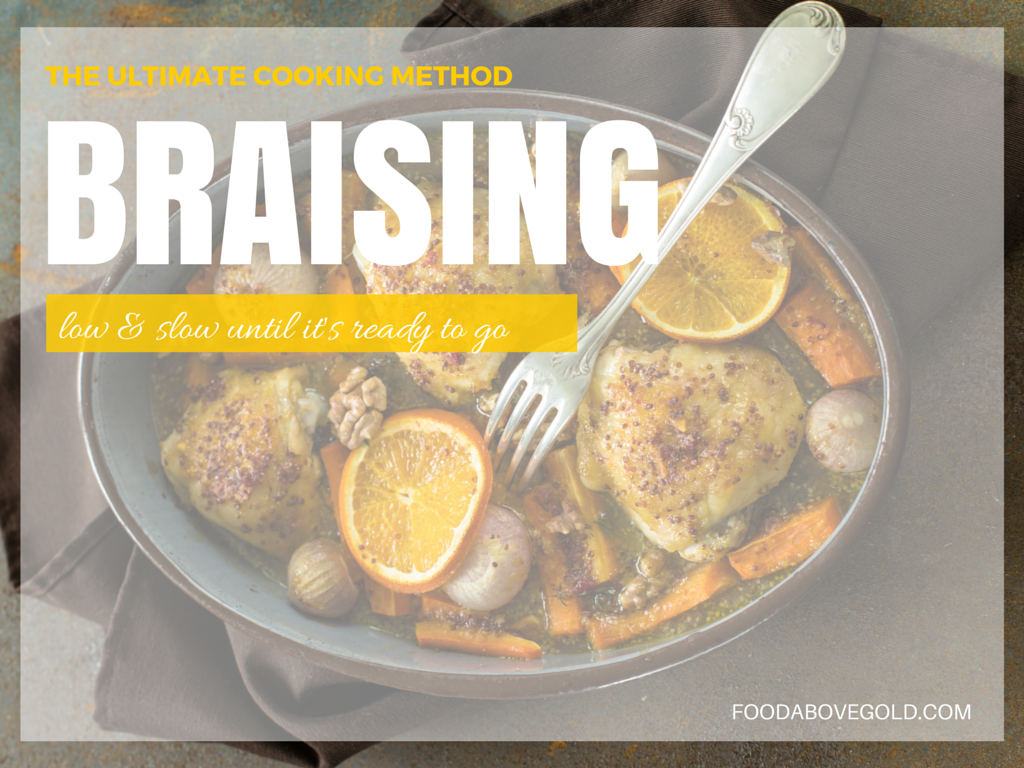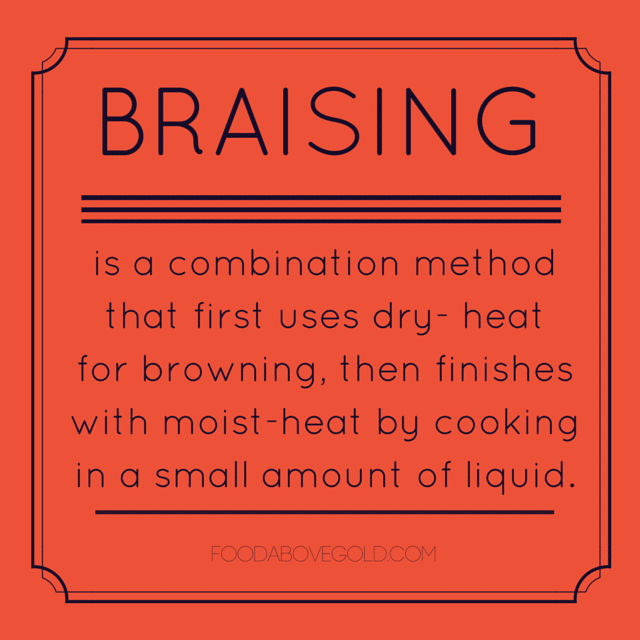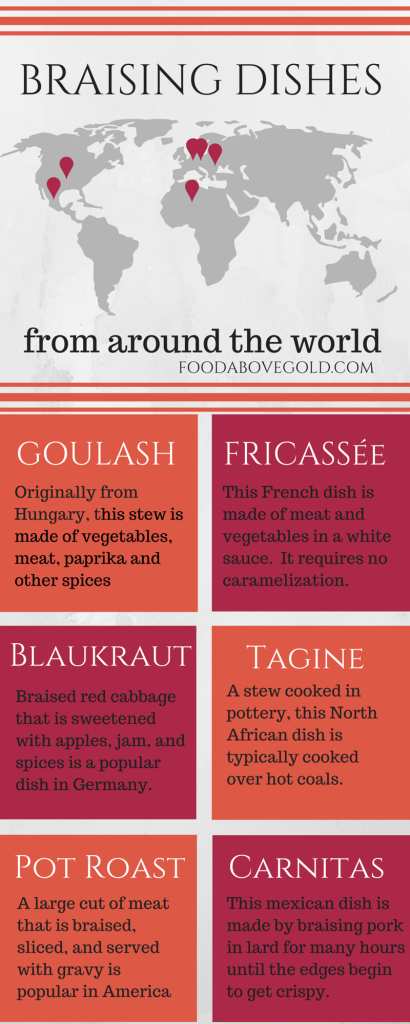
Come curl up with a delicious bowl of stew and enjoy braising with me. Braising is probably one of my favorite cooking methods. After simmering, it is probably the one most used in my house, and simmering only really beats it because we just happen to make a lot of soup. Also, if I had to live off of one type of cuisine for the rest of my life, it would, without a doubt, be Mexican food - and a lot of mexican foods are braised.
What is braising?
Remember our discussion during baking & roasting about how when you put food in the oven and cover it with a lid of some form, you are no longer baking or roasting, you are either steaming or braising? Braising is a moist-heat method done by cooking in a small to moderate amount of liquid. More often than not, what you are braising is usually browned first, and the liquid you are using gets turned into a sauce. For instance, a really good pot roast might be browned in your pan on the cooktop, and then have some stock or water added before you leave it to finish cooking (on the cooktop, or in the oven). You might add some veggies or potatoes down the road, but you'll probably use the liquid as an au jus, or maybe thicken it to make a gravy.

Now, you might be asking yourself, "Mackenzie, how is braising a moist-heat method if it is browned over dry-heat first?" Excellent question! The answer to that is (and I promise I'm not trying to throw you a curve ball) that sometimes braising is referred to as a combination method since it can use both dry-heat, and moist-heat to cook. To be clear though, browning is optional in braising. However, if you do choose to brown, since moist-heat dominates the bulk of the cooking time, you would usually call it braising if you have to pick just one. Can you imaging trying to cook an entire pot roast pan-frying? I imagine it would take forever, and not be very good...and tough...nobody likes a tough pot roast.
How is braising done?
Let's go through the process!
- Seasoning. Usually, at the bare minimum, this means salt and pepper, but it could also done by using a rub or a marinade.
- Browning (optional, but recommended). Next, the meat is browned by sautéing or pan-frying. "Oh no! Not frying!", you think. Don't worry, pan-frying requires fat to cook, but isn't "frying" like we think of it. You may only be using 2 Tbsp. of oil to brown your entire pot roast.
- Add aromatics and/or vegetables. This is the point where you may choose to add some onion, garlic, herbs, or vegetables to your mix. They may be browned, but they don't have to be. Depending on what you are making, this step may be reserved for later.
- Add liquid. Usually, braising liquid doesn't go more than ⅔ - ¾ the way up the item. Most of how much liquid is used depends on how much you need it to reduce to make the sauce. Therefore, you may only need the liquid to go ¼ the way up your food.
- Braise. You can continue to use the range, or you can put it in the oven. Perks of oven-braising include having your cooktop free to do other things, having uniform cooking (since the heat isn't just coming from the bottom, but from all around), and because the heat is controlled, you don't have to keep such a watchful eye on it.
- Add vegetables (optional). Depending on your recipe, they may have you add your vegetables later into your cooking time. For example, my pot roast may take 4 hours to braise in the oven, but the potatoes and carrots I want to put in it only need the last hour of braising to cook.
- Sauce adjustment (optional). This is done when you want to make your sauce a little thicker or smoother. You may choose to reduce your sauce, thicken with a roux or slurry, or add a new ingredient, like another sauce or demi-glace.
- Remove from heat and enjoy! Once your meat is cooked through and your sauce is reduced to the desired consistency and amount, you can remove your pot from the heat and serve! Yum!
What is the difference between braising and slow cooking?
Now, here is where it gets fun! I used to think that slow cooking was braising because it is usually done at a low temperature over a long period of time ("low and slow" I like to call it), but it is actually simmering. Braising is not supposed to have enough liquid to cover what you are making, and slow cooking usually does. I know there are always exceptions, and you probably have that one recipe in your mind that you're thinking - "Ah-ha! I have her now!", but in general, there is enough liquid to cover what you are making in a slow cooker.
Can only meats be braised?
No! You can braise vegetables as well, like cabbage or hearty root vegetables. Browning is not necessary when you braise vegetables, but you may want to just to boost flavor. Keep in mind though, that because vegetables cook fairly quickly, the amount of time you spend browning may actually own more of the cooking time than braising, which puts you in that combined method territory, and possibly ending you up with your predominate method being sautéing, etc...

If you could live off of any one type of cuisine, what would it be?


What are your thoughts?